Pronunciation See pronunciation note MedlinePlus a682437 CAS ID 302-79-4 Biological half-life 0.5-2 hours | AHFS/Drugs.com Monograph Routes ofadministration topical, by mouth Molar mass 300.4412 g/mol Formula C20H28O2 | |
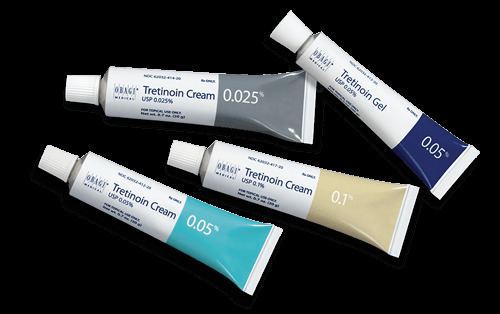 | ||
Trade names Vesanoid, Avita, Renova, Retin-a, others Pregnancycategory AU: X (High risk)US: C (Risk not ruled out) ATC code D10AD01 (WHO) L01XX14 (WHO) Trade name Vesanoid, Avita, Renova, Retin-a, others | ||
How to use retin a tretinoin beautiful skin
Tretinoin, also known as all-trans retinoic acid (ATRA), is medication used for the treatment of acne and acute promyelocytic leukemia. For acne it is applied to the skin as a cream or ointment. For leukemia it is taken by mouth for up to three months.
Contents
- How to use retin a tretinoin beautiful skin
- My acne story before and after retin a tretinoin treatment
- Skin use
- Leukemia
- Leukemia use
- Mechanism of action
- History
- Etymology
- Research
- References

Common side effects when used by mouth include shortness of breath, headache, numbness, depression, skin dryness, itchiness, hair loss, vomiting, muscle pains, and vision changes. Other severe side effects include high white blood cell counts and blood clots. When used as a cream side effects include skin redness, peeling, and sun sensitivity. Use during pregnancy is known to harm the baby. It is in the retinoid family of medications.

Tretinoin was patented in 1957 and approved for medical use in 1962. It is on the World Health Organization's List of Essential Medicines, the most effective and safe medicines needed in a health system. Tretinoin is available as a generic medication. In the United Kingdom the cream together with erythromycin costs the NHS about 7.05 pounds per 25 mL while the pills are 1.61 pounds per 10 mg.
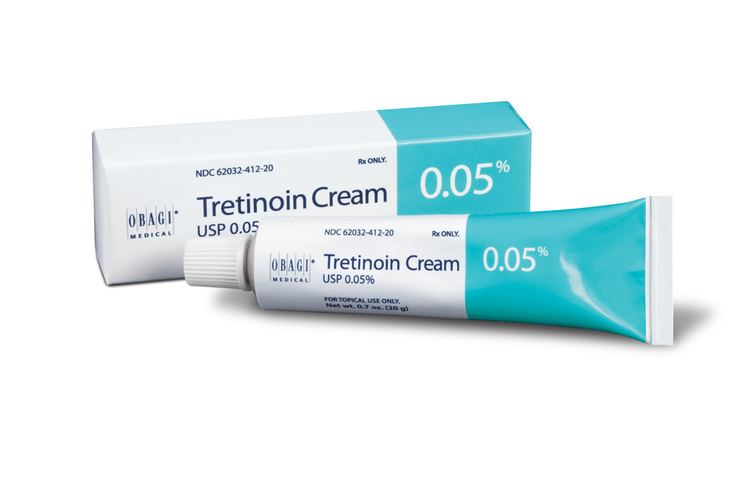
My acne story before and after retin a tretinoin treatment
Skin use

Tretinoin is most commonly used to treat acne. It is also used off-label to treat and reduce the appearance of stretch marks by increasing collagen production in the dermis.
In topical form, this drug is pregnancy category C and should not be used by pregnant women.
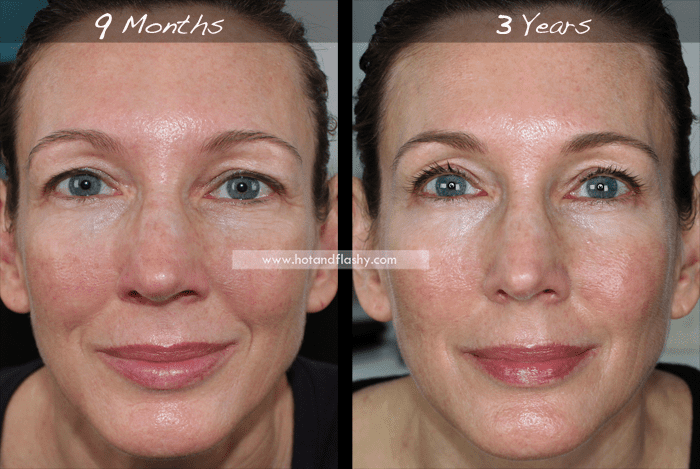
People using the topical form should not also use any cream or lotion that has a strong drying effect, contains alcohol, astringents, spices, lime, sulfur, resorcinol, or aspirin, as these may interact with tretinoin or exacerbate its side effects.
Leukemia
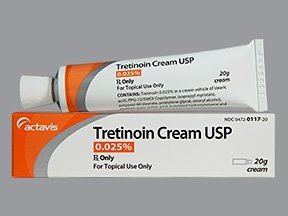
Tretinoin is used to induce remission in people with acute promyelocytic leukemia who have a mutation (the t(15;17) translocation 160 and/or the presence of the PML/RARα gene) and who don't respond to anthracyclines or can't take that class of drug. It is not used for maintenance therapy.
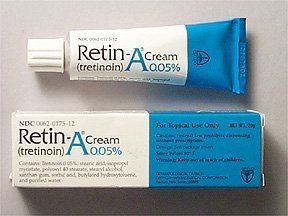
In oral form, this drug is pregnancy category D and should not be used by pregnant women as it may harm the fetus.
Skin use
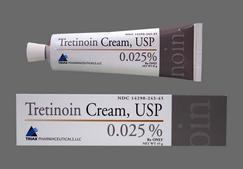
Topical tretinoin is only for use on skin and it should not be applied to eyes or mucosal tissues. Common side effects include skin irritation, redness, swelling, and blistering. Skin is more susceptible to sunburn.
Leukemia use
The oral form of the drug has boxed warnings concerning the risks of retinoic acid syndrome and leukocytosis.

Other significant side effects include a risk of thrombosis, benign intracranial hypertension in children, high lipids (hypercholesterolemia and/or hypertriglyceridemia), and liver damage.
There are many significant side effects from this drug that include malaise (66%), shivering (63%), hemorrhage (60%), infections (58%), peripheral edema (52%), pain (37%), chest discomfort (32%), edema (29%), disseminated intravascular coagulation (26%), weight increase (23%), injection site reactions (17%), anorexia (17%), weight decrease (17%), and myalgia (14%).
Respiratory side effects usually signify retinoic acid syndrome, and include upper respiratory tract disorders (63%), dyspnea (60%), respiratory insufficiency (26%), pleural effusion (20%), pneumonia (14%), rales (14%), and expiratory wheezing (14%), and many others at less than 10%.
Around 23% of people taking the drug have reported eararche or a feeling of fullness in their ears.
Gastrointestinal disorders include bleeding (34%), abdominal pain (31%), diarrhea (23%), constipation (17%), dyspepsia (14%), and swollen belly (11%) and many others at less than 10%.
In the cardiovascular system, side effects include arrhythmias (23%), flushing (23%), hypotension (14%), hypertension (11%), phlebitis (11%), and cardiac failure (6%) and for 3% of patients: cardiac arrest, myocardial infarction, enlarged heart, heart murmur, ischemia, stroke, myocarditis, pericarditis, pulmonary hypertension, secondary cardiomyopathy.
In the nervous system, side effects include dizziness (20%), paresthesias (17%), anxiety (17%), insomnia (14%), depression (14%), confusion (11%), and many others at less than 10% frequency.
In the urinary system, side effects include renal insufficiency (11%) and several others at less than 10% frequency.
Mechanism of action
For its use in cancer, its mechanism of action is unknown, but on a cellular level, laboratory test show that tretinoin forces APL cells to differentiate and stops them from proliferating; in people there is evidence that it forces the primary cancerous promyelocytes to differentiate into their final form, allowing normal cells to take over the bone marrow.
For its use in acne, the mechanism is unknown, but again on a cellular level there is evidence that it decreases the ability of epithelial cells in hair follicles to stick together, leading to fewer blackheads; it also seems to make the epithelial cells divide faster, causing the blackheads to be pushed out.
History
Tretinoin was co-developed for its use in acne by James Fulton and Albert Kligman when they were at University of Pennsylvania in the late 1960s. The University of Pennsylvania held the patent for Retin-A, which it licensed to pharmaceutical companies.
Etymology
The origin of the name tretinoin is uncertain, although several sources agree (one with probability, one with asserted certainty) that it probably comes from trans- + retinoic [acid] + -in, which is plausible given that tretinoin is the all-trans isomer of retinoic acid. The name isotretinoin is the same root tretinoin plus the prefix iso-. Regarding pronunciation, the following variants apply equally to both tretinoin and isotretinoin. Given that retinoic is pronounced /ˌrɛtᵻˈnoʊᵻk/, it is natural that /ˌtrɛtᵻˈnoʊᵻn/ is a commonly heard pronunciation. Dictionary transcriptions also include /ˌtrᵻˈtɪnoʊᵻn/ (trə-TIN-oh-in) and /ˈtrɛtᵻnɔɪn/.
Research
Tretinoin has been explored as a treatment for hair loss, potentially as a way to increase the ability of minoxidil to penetrate the scalp, but the evidence is weak and contradictory.
